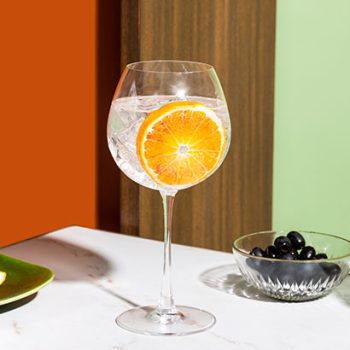Gin’s decline due to transitioning into ‘mature phase’
The slowdown in gin sales signals the category’s transition into a “more mature phase” but further evolution will be needed to retain a captive audience, an expert has advised.

Speaking to The Spirits Business towards the end of 2024, Ryan McFarland, chief commercial and strategy officer at brand owner and distributor Drinksology Kirker Greer, commented on the slowdown of gin sales – notably in established markets like the UK.
“2024 has presented challenges across most spirits categories, and gin is no exception,” McFarland said. “However, I believe the gin market is simply transitioning into a more mature phase following the rapid growth we saw over the past decade. The pace of growth has settled with some sub-categories even moving into decline, and with that the number of new-to-market brands has also slowed.
“My view is we’ll continue to see the category evolve to retain the recently acquired consumers and attract new ones over the coming years, which should deliver a more steady growth trajectory.”
According to data from IWSR Drinks Market Analysis, gin’s decline in the UK can be largely attributed to falling volumes of flavoured gins. Flavoured gin volumes in the UK have almost halved since their 2020 peak, when they represented more than 30% of the category.
Premium-and-above gin volumes in the UK are forecast to continue declining, dropping by a compound annual growth rate (CAGR) of 5% between 20203 and 2028, IWSR noted.
“The rapid category growth pre-pandemic caused a huge increase in the number of gin brands with seemingly every conceivable botanical combination being explored from every corner of the land,” McFarland said. “That did enable most tastes to be catered for and helped attract a whole new set of consumers to gin, but it also led to a more cluttered category that could be hard to navigate for some, as well as resulting in a large number of brands competing for the same shelf space.
“Looking ahead to 2025, the combination of gin brand loyalty, category-building efforts by established players, innovation from new entrants, and continued advocacy from bars and mixologists will ensure that gin remains a diverse and dynamic category that’s well-positioned to weather the challenges.
“In terms of price, gin also remains relatively accessible – allowing most budgets to enjoy it, and to trade up to premium offerings without breaking the bank. Again, this gives me confidence in the category’s resilience and future potential.”
How can gin remain competitive?

In a saturated category, and with consumers remaining cautious about their spending due to higher living costs, how can gin remain competitive?
McFarland stressed the importance of keeping close to consumer wants and needs.
“The key to keeping gin exciting is to constantly innovate and tap into what consumers are interested in,” he said. “This could be anything from exploring new flavour profiles and botanicals to embracing sustainable practices. Our launch of Ukiyo Tokyo Dry is a great example of this – it speaks to the current trends of global inspiration and adventurous flavour profiles.
“While there will always be a place for classic gins, the future belongs to brands that can offer something new and exciting. This doesn’t mean throwing out tradition entirely – it’s about finding ways to reimagine gin while still maintaining its core identity.
“Consumers are looking for more than just a drink – they want an experience. This means that brands need to tell a story, create a connection with their audience, and offer unique products that also inspire creativity behind the bar.”
Related news
Peddlers Gin launches cocktail contest
